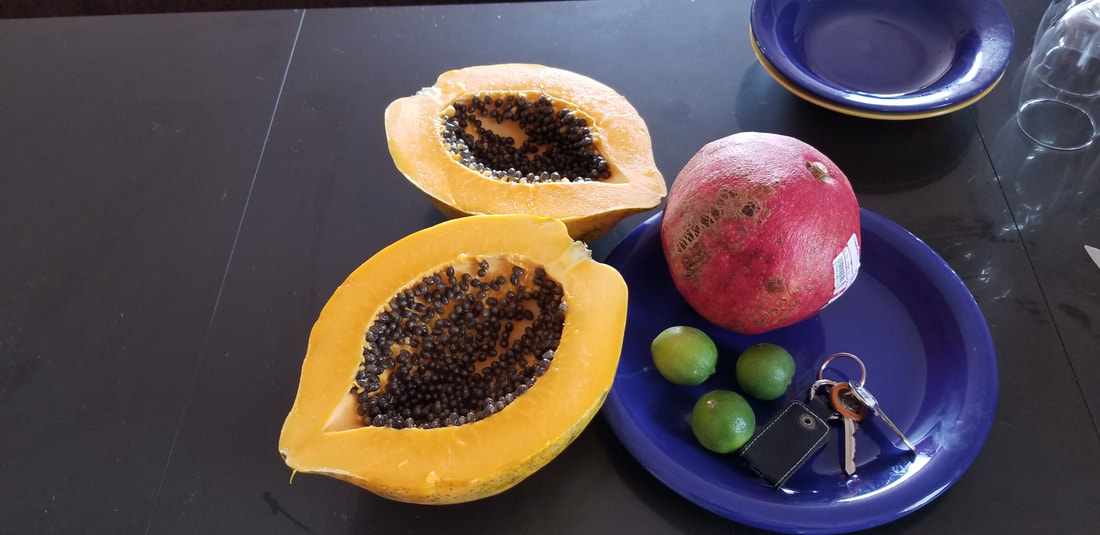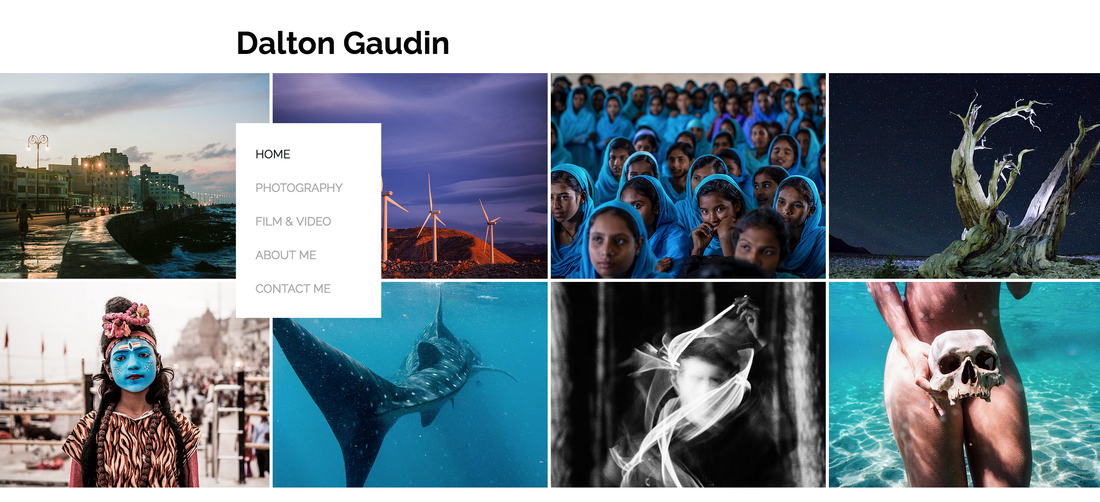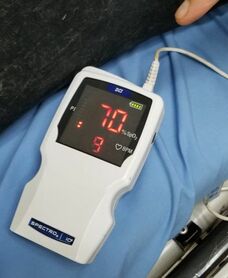 Miriam's blood oxygen levels went from high 60% to 70%...not the optimal 85% to 95% desired. Miriam's blood oxygen levels went from high 60% to 70%...not the optimal 85% to 95% desired. HEALTH FIRST I had hoped this next blog would be a more in-depth explanation of the history of the Pachamama ritual we did last week up at Saqsaywaman. But, given some unforeseen circumstances, this week's blog will be about the logistics of living at 11,200 miles above sea level (in Q'osqo - Saqsaywaman is at 12,143 miles above sea level) and the day-to-day challenges of living in another culture. High altitudes always cause people who spend most of their lives near the coast, or even a bit higher, headaches and dehydration are always to be planned for. But, this week, my good friend Miriam (who was my first adult expedition member) had a bit more of a challenge. Apparently, you need to sustain an oxygen level in your blood of at least 85% - 90%, but her's was dipping as low as the high 60%. So, Friday of last week, off to the hospital we went. The doctors here at the SOS Clinica, partners with Maximo Nivel, were great! But, bottom line, Miriam was in the hospital for 4 days and ultimately had to go home. Apparently, some people just can't adjust to this altitude. And, if you have any type of bronchial challenges, that makes it even harder to adjust. 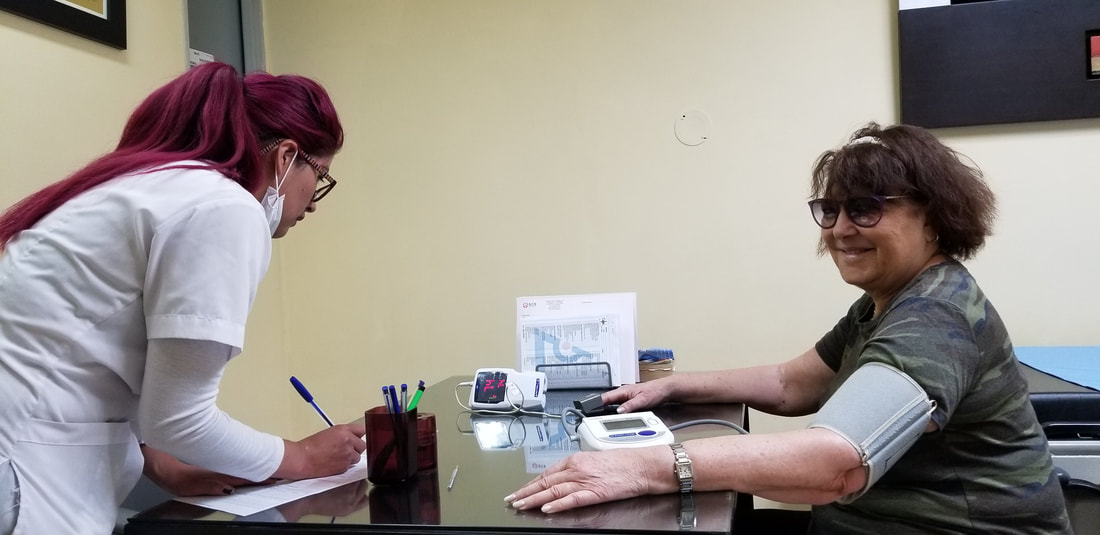 Miriam on her first day at the hospital. Thanks Miriam for being such a good sport about the whole situation! And, your feedback on the Medical Center SOS and the travel insurance company will make our program stronger! Miriam on her first day at the hospital. Thanks Miriam for being such a good sport about the whole situation! And, your feedback on the Medical Center SOS and the travel insurance company will make our program stronger! LESSONS LEARNED When I bring adults explorers and my field students down here, we will have to be very alert to the initial signs of oxygen deprivation. I'm going to be buying a digital finger oxygen meter to have down here just in case. One of the reasons I had Miriam come with me as my initial adult traveler was I knew she would give me good feedback on my program. And, her feedback on both the SOS Medical Center (which passed with A+ marks) and the travel insurance we purchased (which received a resounding FAIL) is invaluable! And, Miriam had a GREAT attitude throughout the whole ordeal...and even took the fact that she had to return home with a good attitude! Thanks Miriam for being such a good sport...we'll connect some other trip at a lower altitude! Luckily, my oxygen levels seem to stay around 88% to 95%. I'm wondering if there's any type of blood test to see if someone has a risk of being at altitude. I'll have to look into that. With today's DNA tests and other medical advancements, I bet there is some way to pre-screen people for altitude susceptibility. Maybe that little, tiny 1% of Andean DNA that I have is enabling my blood to uptake oxygen almost as effortlessly as the locals, whose actual blood cells are different than us lowlanders, enabling them to process oxygen very well at these high altitudes.  OTHER LOGISTICS On top of altitude, there are many different aspects of living in Peruvian culture that tend to throw us Americans for a bit of a loop. One of the aspects of traveling to another culture I love is appreciating these differences and learning to adjust. But, adjust we must. So, for those of you intending to come down here at some point, either as my adult explorers or as field students, here are some factors to take into consideration. ELECTRICITY This country runs on 220 power. We are used to 110 in the USA. Last time I was here, that meant I had to have converters for everything. And, power can be inconsistent, often surging high or cutting out altogether. So, this time I find that most outlets have now been fitted with the two round prong plugs that I'm used to seeing in Peru, but they also have the ability to fit our flat little two prong plugs. So, yes...you can plug into the outlets, but you run the risk of blowing up your equipment. So, do so with caution. My solution, I only plug in as along as I can monitor the charge...and as soon as the device is charged, I unplug. So far...no fried equipment...keeping my fingers crossed! And, watch out for the almost daily electrical storms...I try to unplug during these. 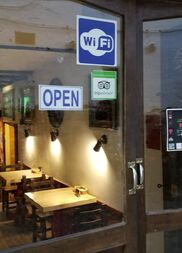 WIFI Wow, unlike the US, almost EVERY place here offers free WiFi...and it's usually pretty good speed. The downside of course, no security. So use with caution. I'm sitting right now at my favorite place to work, the Hotel Monesterio, and using their free WiFi...just don't doing any banking or anything else that requires security and a password. WiFi is also susceptible to the weather. I discovered this fact this morning as I was trying to upload a rather large file to a client of mine (yes, I am still working from Cusco for my Carmel/Monterey clients) and it just wouldn't go. I had to go down to a little Pizza place in Cusco to use their WiFi to get it uploaded. 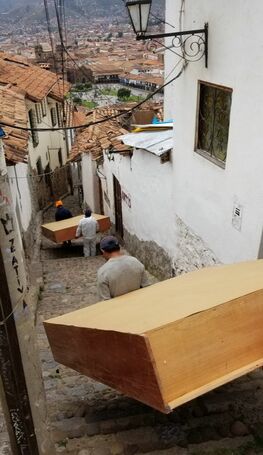 SHOES Yes, the lowly "zapatos"...a very important part of your survival here. Why? Because the streets here are ancient. They are often wet. Stones are irregular, sharp, and it's VERY easy to twist an ankle, fall or worse. So, choosing your daily shoes is very important. Some of the local women can be seen wearing sturdy heals, but even for me (and those of you who know me know I love my heals) risking these types of shoes here is just not worth it. I brought two pairs of boots. One a low ankle boot and the other a higher boot for hiking. But, I also ended up buying a pair of slip on sneakers. This morning as I was headed out the door down a VERY steep staircase, I ended up taking off the sneakers and putting on my hiking boots. Why? It was raining and the task of navigating down the steep stairs required stability. Unlike these brave guys taking bookshelves down the stairway right outside my flat without a second thought...I go step by step like sure footed donkey. Fashion went out the door when I came down here.
There's a big difference between the "supermercado" and the local "San Pedro" market. Think of our Farmer's market with WAY more stuff. You walk into this huge place and are immediately overwhelmed by aisle and aisle of "not-plastic-wrapped", RAW goods. The meat aisle smells of blood. The fruit aisle is a feast for the eyes and nose, as is the artisan cheese section. Nothing is wrapped like us Americans are used to. And that can be jarring, interesting, and an education all at the same time. Not for the faint of heart and certainly not for vegans. Couple of other pointers when shopping. When you buy produce, it must be weighed and priced by the person in the produce department. They won't do it for you at the check out counter. And, just because it's in a package with plastic wrap doesn't mean it has a price. Milk comes in a box in the canned section of the store, not in the dairy case. Fruit is either HUGE or tiny. Limes are the same as lemons here...you won't find a yellow lemon. Many items come in a plastic squeeze box, like cream, mustard and mayo. Mexican food like tortillas don't live here. Coffee is great, but REALLY expensive. Finding garbanzo beans is something I have yet to accomplish. Olives are hard to find too, as are pickles. No where in town have I found a place that serves a burger with pickles...and given I like pickle burgers, this is a bummer. I swear I'm going to bring my own pickles in my purse along with my hand sanitizer and tissues. Salad stuff like we Californians like is hard to cobble together. You have to be careful buying lettuce and all produce needs to be washed VERY well. I usually soak things in the sink with a bit of dish soap before eating. So far, so good. If you like MEAT...this is your culture. For those of us who prefer chicken and veggies, work is required. Going into my third week here, I think I'm finally set.
Given the number of one-way streets and the fact that the Plaza de Armas shuts down to traffic frequently (at inconsistent hours), you can't rely on taxis being willing to take you where you want to go. If the driver thinks it's just too much of a hassle to take you where you want to go, they will refuse the ride. And, at night and when the streets are wet, getting up the hill to our flat on Calle Resbalosa has turned out to be a BIG feat! If you haven't already seen the video of us getting stuck one night while it was raining...check it out. Scary...funny...and very common! So, plan ahead for your taxi rides. And, you can always go to a big hotel and ask them to call you a cab...which will cost a bit more, but is worth it. 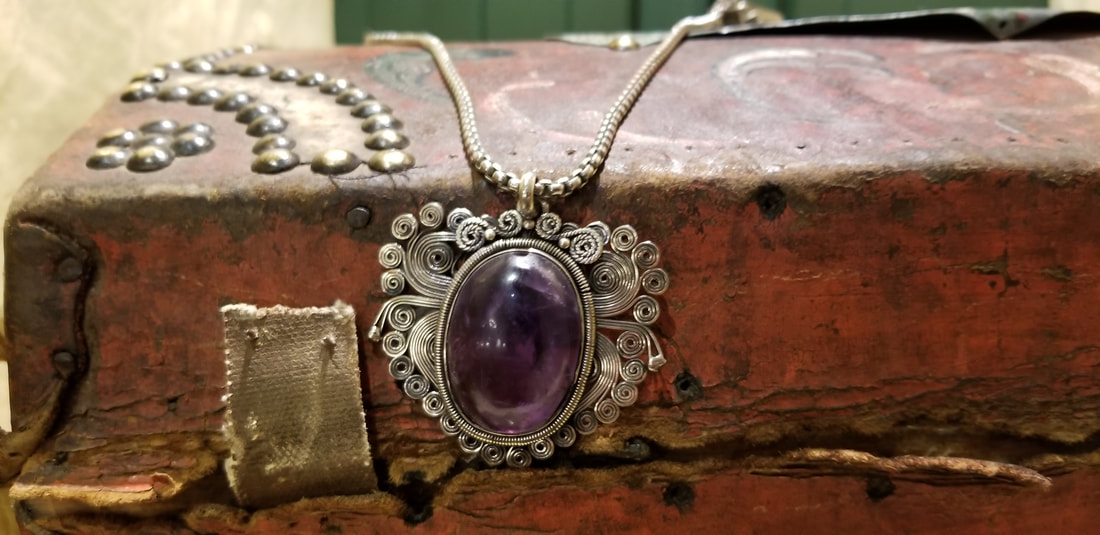 EXCHANGE RATE MAKES THE US DOLLAR GO FAR Right now, you get 3.34 Soles per US Dollar. Which makes Peru really a good deal for us Americans. You can get a 4 star meal at one of the great restaurants with a drink for about $35. Shopping for handmade crafts, clothing and jewelry is also fun given the exchange rate. And, of course, you are expected to bargain. I've been having fun collecting new pendants for my BeadItForwardStore website. And, if you buy now, I'll be sure to ship your purchase to you as soon as I get back on the 7th of February so you get your purse in time for Valentine's day. I'm having a blast finding unique beads and pendants from local artisans. And, as always, every purchase will come with a free pair of earrings that I'm finding here too! I've been having a blast taking pictures of my finds against the ancient backdrop of historical churches and megalithic stone structures. I'm looking forward to finding more unique, homemade items when I start working in the local communities on the Saqsaywaman site next week. Especially homespun woven goods and raw materials like alpaca yarn dyed with natural colors. Can't wait! 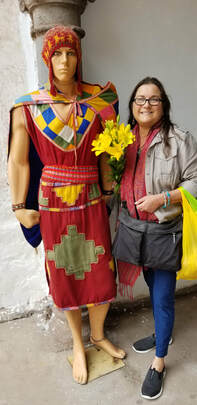 NEXT STEPS This coming week my fellow visual anthropologist, Dalton Gaudin, arrives to help me with my research up at the Saqsaywaman archaeological park. We will be working the the Ministry of Culture professionals as well as the various communities that live on the site. I've been trying to team up with Dalton for years and I'm so honored that he's willing to join me on this project. He totally understands what I'm trying to do and I look forward to including his insights on this amazing place in my next blog. He will bring a level of professionalism and his amazing skills as a cinematographer to this project. He also is planning to produce a book of photos from the research. Stay tuned if you are interested in purchasing his photographic story of Saqsaywaman. Check out his website at: DaltonGaudin.com Safe travels Dalton. Can't wait to see you! Thanks again to all who are reading this and supporting my work. As we get ready to go into the field next week, I am truly touched that so many people have believed in me!!!
0 Comments
Leave a Reply. |
Author
Maren Elwood is a visual anthropologist and founder of On-Site Expeditions...a field school that will provide scholarships to aspiring heritage professionals. The first field school session will be in January 2020. Archives
September 2023
|
